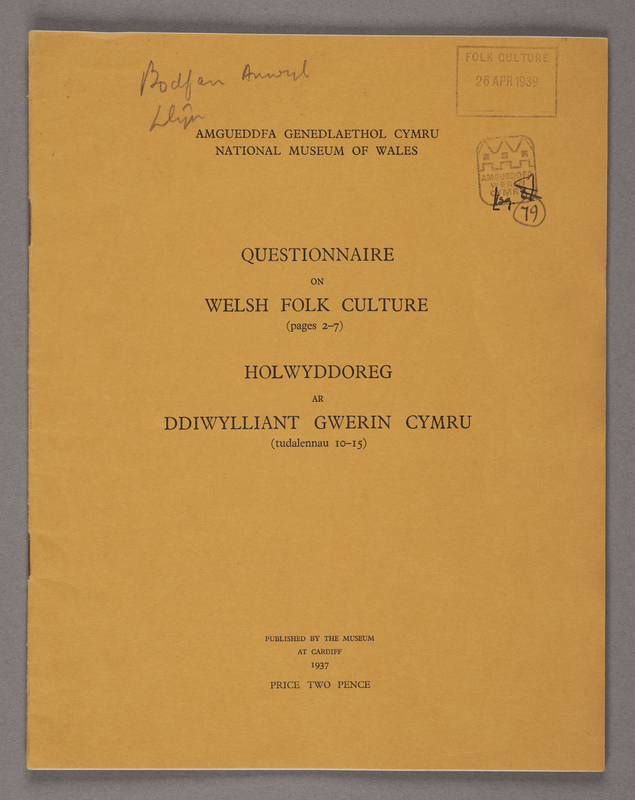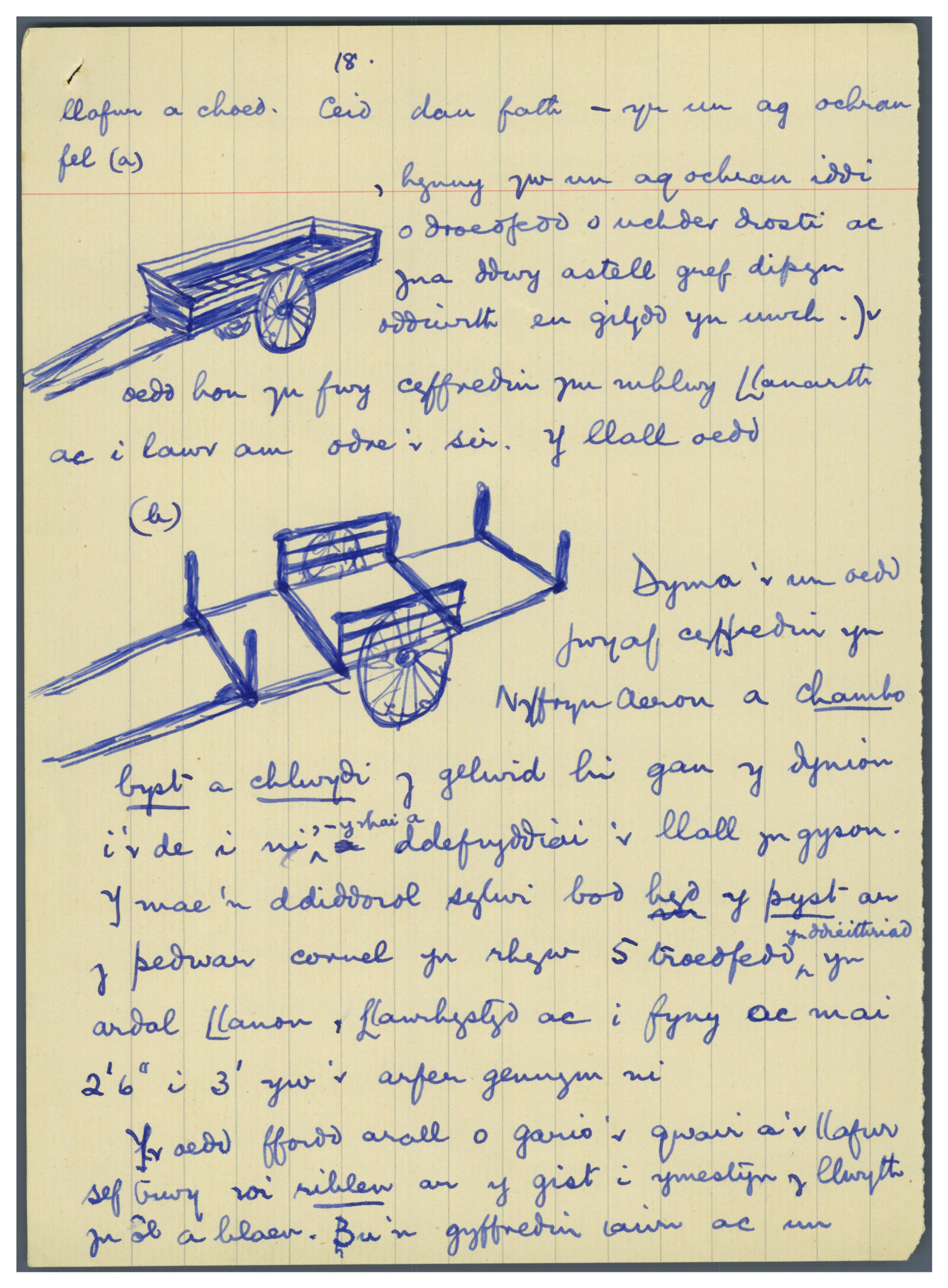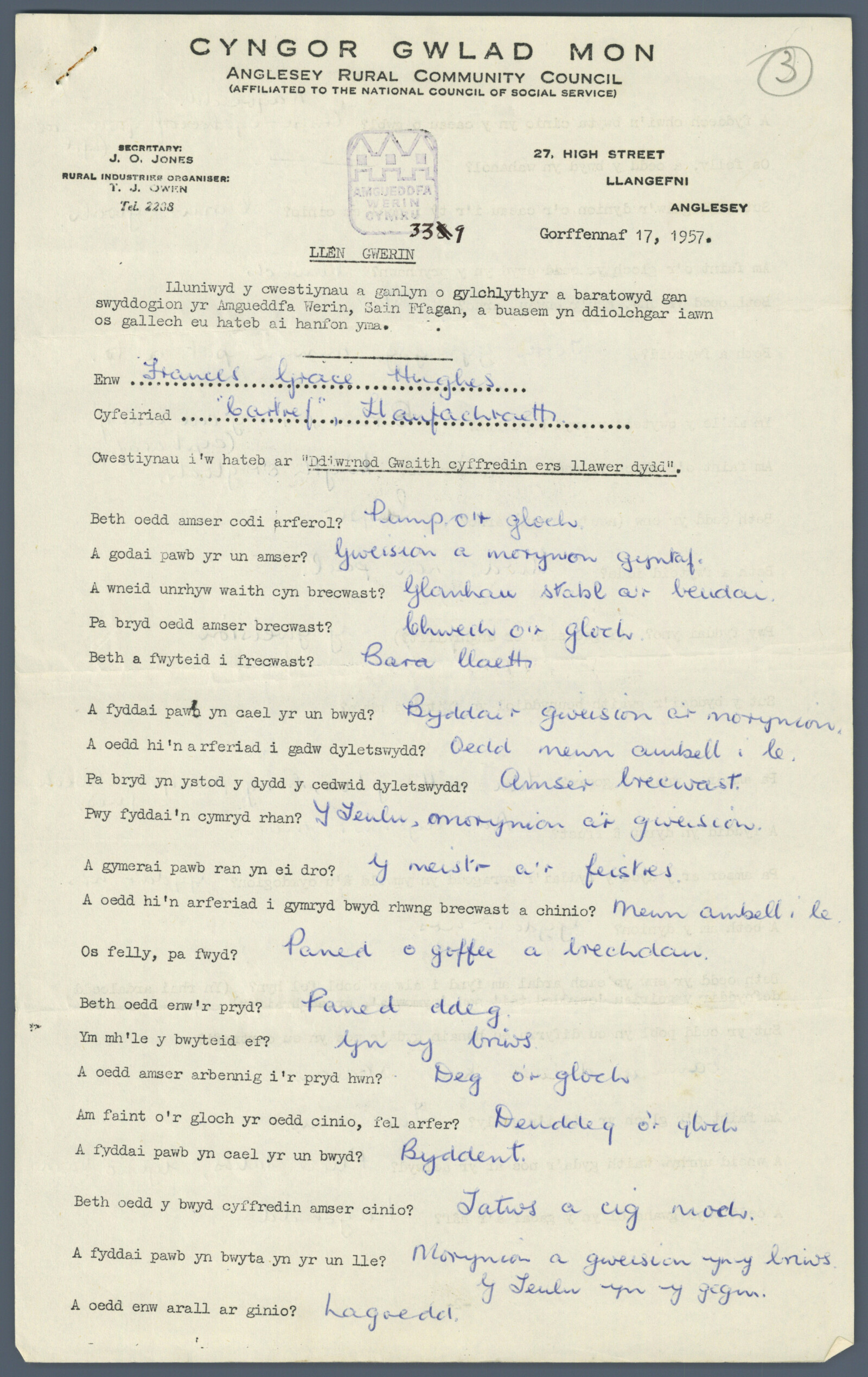Recording everyday life in 20th Century Wales
, 1 September 2021
For the past eight months I have been gathering information about the questionnaires sent out by St Fagans National Museum of History in various decades during the twentieth century. The questionnaires focus on documenting everyday life in Wales and collecting information about what respondents knew about various subjects relating to the social and cultural life of the Welsh people. They open-up a fascinating insight into how people viewed the world around them and what they did in their everyday lives, as well as describing items they used for work or had in their homes. The responses are often very detailed about local knowledge. The earliest questionnaires in the collection are from 1937. Many respondents included sketches of the items they were describing and took time to give explanations about how they were used.
One respondent in the 1937 collection was W. Beynon Davies who gave information on the area of Dyffryn Aeron and central Cardiganshire. In this sketch he describes two different types of Gambo cart used in Duffryn Aeron, one with sides and the other with lower sides for different uses. G. Elfed Jones of Maesteg also gives many interesting facts about domestic items and interesting comments about his area including a sketch of a box iron and rubbings of a Crown Copper Penny dated 1811. Islwyn Ffowc Elis, who later became a Welsh author, was a school child at the time of the first questionnaires, includes pencil sketches of a goffering iron and other household items used in his home.
Other fascinating versions are questionnaires sent out in 1957 in collaboration with Anglesey Rural Community Council and the Welsh Folk Museum as St Fagans was known at the time. They listed in detail a typical day of work and eating patterns of rural workers. Questions included what time did respondents get up in the morning? What time did they have breakfast? What times of day did they work? What type of work did they do? What type of meals did they eat and what were the foods or meals called? It gives an unique picture of the hard work and long days often worked by rural workers. Frances Grace Hughes of Llanfachreth records her working day would start at 5am, and ˈbedtime would be at 9pm. Servants would rise first and then the master and mistress of the house would wake. Before breakfast, the stables and cow sheds would be cleaned. Breakfast would be at 6am which would consist of bread and milk. Lunch would be at 12pm and consist of potatoes and bacon. Various tasks would be completed throughout the day including milking at 7am and 5pm and the evening meal would at 8pm. After supper they would amuse themselves by singing and telling stories or preparing meals for the next day.
In 1958, Lewis Williams, who was living in Treharris, vividly remembers Christmas traditions he enjoyed as a child in the Corris area and gives a detailed account of all the activities undertaken by the community including Calennig, and also the tradition of ˈcigaˈ during the hard winter of 1894 where neighbouring farms would give a donation of meat to struggling families.
During the 1970s and 1980s the questionnaires focused on dialect and language and housekeeping and food preparation. On the subjects of foods and cooking respondents were asked about the area they were giving information about e.g. on a farm, in a rural area, in a slate quarrying area or in a coal mining area. Respondents were asked to give information about foods eaten in different seasons, on different days and at every meal.
This is just a flavour of the information held in this collection and a window onto a period of Welsh life. The responses to the questionnaires and answer books can all be seen here.



